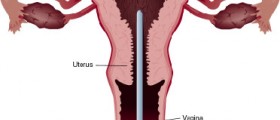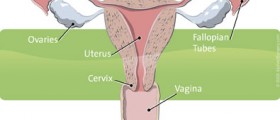
What is Endometrial Hyperplasia?
Endometrial hyperplasia is a medical condition characterized by changes in the endometrium that develop as a consequence of excess estrogen or due to imbalance between estrogen and progesterone.
The overgrowth of the endometrium is the reason why the affected woman experiences abnormal bleeding. The condition per se is considered benign although it may progress into adenocarcinoma in case there are atypical cells present in the changed parts of the endometrium.
As for the types of endometrial hyperplasia there are simplex endometrial hyperplasia, complex endometrial hyperplasia as well as simplex atypical and complex atypical form of the disease.
In the majority of cases (approximately 90% of all patients) of simplex and complex hyperplasia the endometrium returns to its normal state spontaneously. According to available data and one study carcinoma occurred in 1% of patients suffering from simplex hyperplasia and 3% of patients with complex hyperplasia. The percentage was a bit higher in atypical forms of the disease where 8% of patients with simplex atypical hyperplasia and even 29% of those with complex atypical hyperplasia eventually ended up with adenocarcinoma of the endometrium.
The condition is closely connected with changes in menstrual periods such as bleeding/spotting between menstrual periods, heavy bleeding, and missed menstrual periods. Additionally, there are dryness of the vagina, excessive growth of body hair, acne, mood swings, severe fatigue and pain during sexual intercourse. Some women also deal with hot flushes, feelings of intense heat along with excessive perspiration as well as rapid heartbeat.
Under normal circumstances estrogen is responsible for build-up of the uterine lining while progesterone controls such build-up. In case there is too much estrogen, the lining of the uterus will become thicker than usual. So any imbalance associated with excess of estrogen is considered a cause of endometrial hyperplasia. This is, for instance, reported in women who take estrogen hormone therapy without additional progesterone.
What is more, the condition seems to accompany other diseases such as diabetes, obestity and polycystic ovary syndrome. And finally, endometrial hyperplasia is reported more in menopausal women than in women in their reproductive years.
Endometrial Hyperplasia Diagnose with Ultrasound
Ultrasound is a powerful tool used in the diagnosis of many various gynecological conditions. It can give a perfect insight in the thickness of the endometrium and determine whether there is any hyperplasia i.e. whether the wall of the uterus is thicker than it is supposed to be. However, ultrasound cannot differentiate types of hyperplasia. This is achieved after samples of the affected endometrium are taken and then sent for pathohistological examination.
A well-experienced gynecologist will recognize the phases of the menstrual cycle and determine if the thickness of the wall of the uterus corresponds with each of the phases. With accurate measurements doctors make difference between normal build-up of the lining of the organ and excessive build-up which is a characteristic of endometrial hyperplasia.
In menopausal women the main thickness of the endometrium is much thinner than in women in their reproductive years. So, any more prominent thickening points to the presence of some pathology.
A definitive diagnosis is established after endometrial biopsy and examination of taken samples. Endometrial samples for analysis are obtained by dilation and curettage with traditional biopsy.
Once the condition is confirmed and the type histologically determined doctors may discuss available treatment options. The treatment will depend on the age of the affected woman and the severity of the condition. Younger women are usually prescribed drugs that take care of and regulate their menstrual period preserving the uterus. These drugs may be in the form of a birth control patch, birth control pill, birth control vaginal ring and intrauterine device.
Perimenopausal as well as menopausal women usually benefit from hormone replacement therapy. The treatment comprises a specific combination of female hormones that were once produced by the body and now their level is insufficient. Hormone replacement therapy brings the symptoms of hyperplasia under control. On the other side, this treatment approach carries certain risks. Namely, it is associated with the onset of heart disease, stroke and similar complications and is a stimulator of breast cancer. Menopausal women and women who are still able to conceive a child but are determined not to have any more children may be (if medical therapy fails or there is a risk of endometrial cancer) recommended a hysterectomy, a surgical removal of the affected uterus.
All in all, in spite of being a benign condition in many cases endometrial hyperplasia can sometimes be a precancerous condition eventually progressing into adenocarcinoma of the endometrium. Today, women suffering from the condition have several treatment options available and they may overcome practically all symptoms of the disease. Left untreated endometrial hyperplasia may precipitate various complications. For example, heavy bleeding results in anemia, pain and bleeding abnormalities might interfere with normal everyday activities resulting in absenteeism from work/school, and there is also risk of infertility. So, do not neglect your health and visit your health care provider as soon as you notice any abnormalities in menstrual cycle that might point to endometrial hyperplasia.

















Your thoughts on this
Loading...